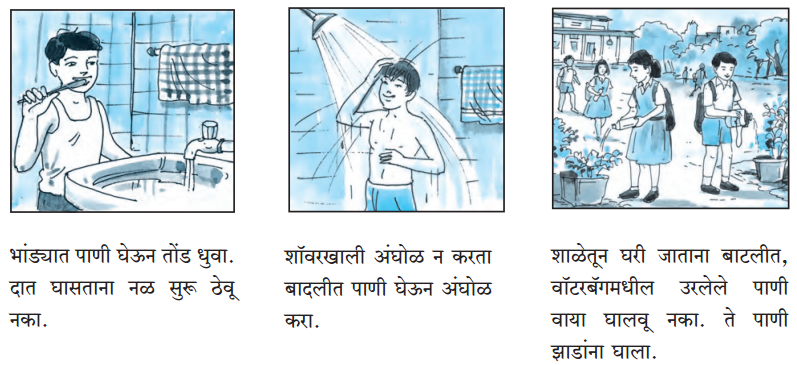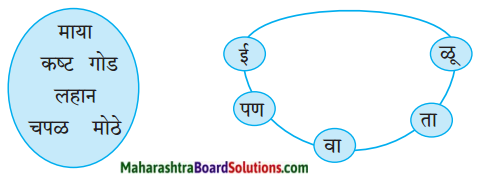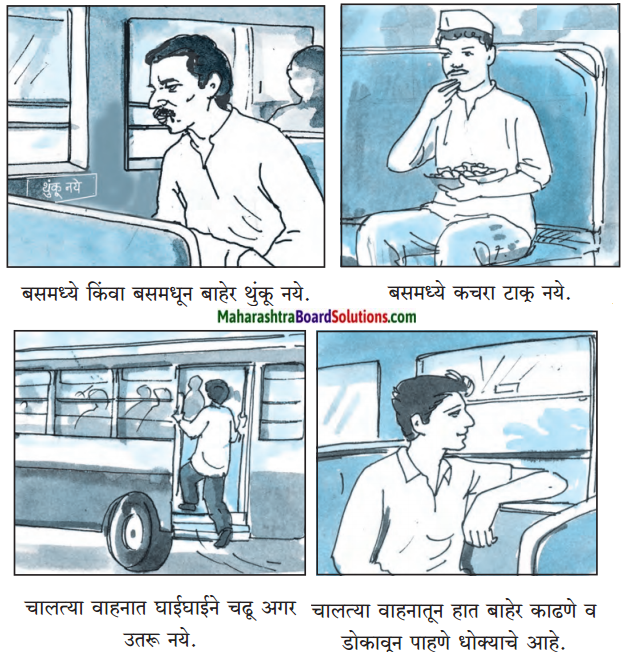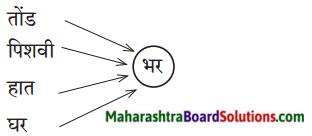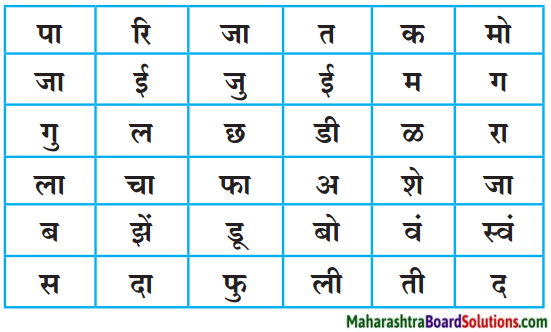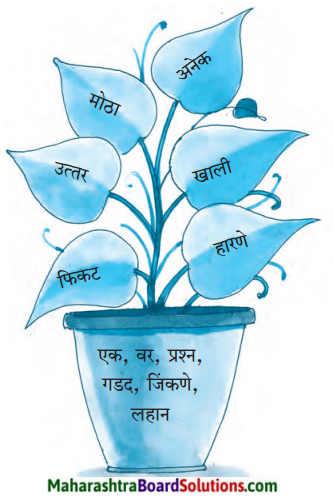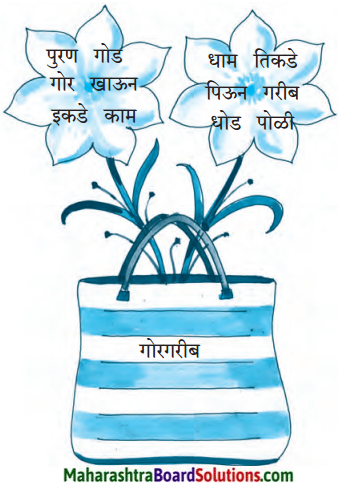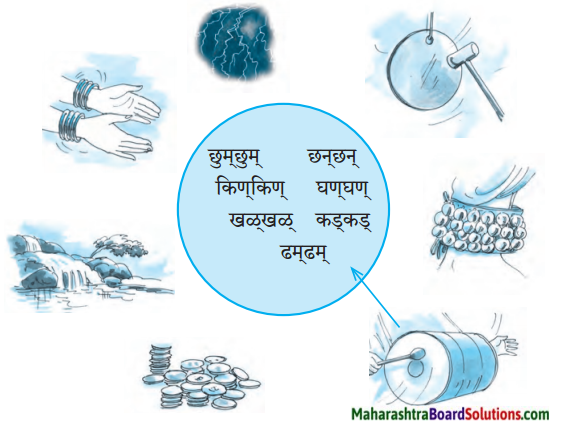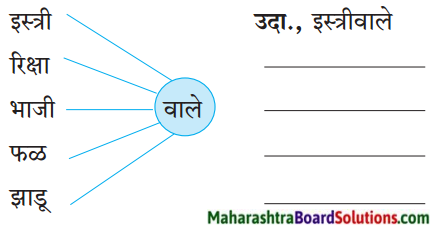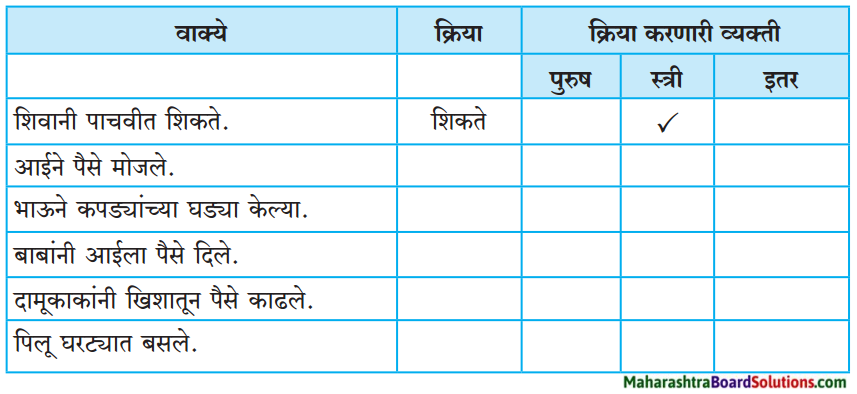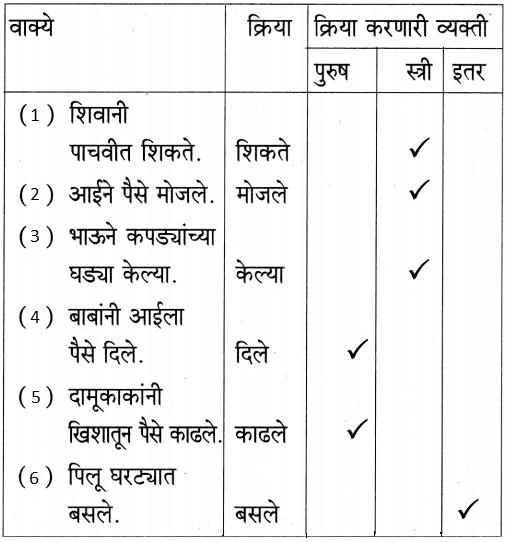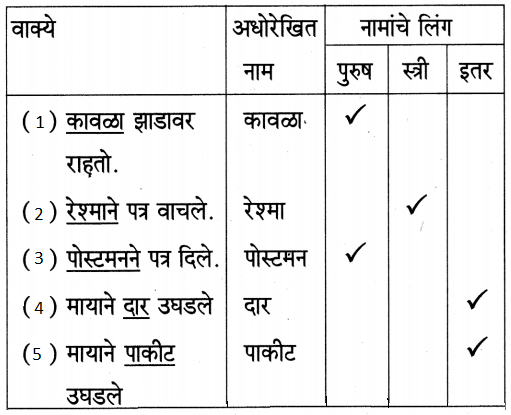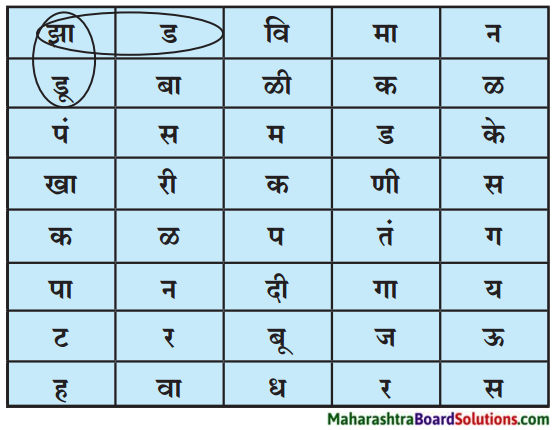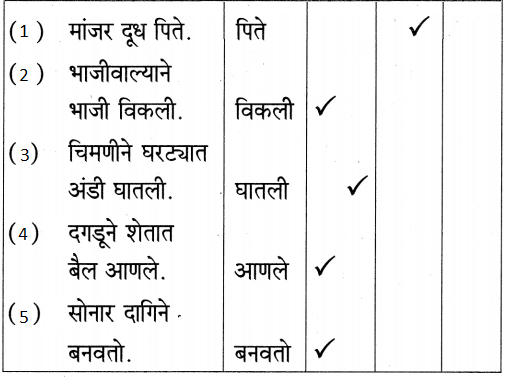Std 5 Hindi Lesson 24 ऐका पहा करा Question Answer Maharashtra Board
Balbharti Maharashtra State Board Class 5 Marathi Solutions Sulabhbharati Chapter 24 ऐका पहा करा Notes, Textbook Exercise Important Questions and Answers.
5th Std Hindi Poem Eka Paha Kara Question Answer
5th Standard Marathi Digest Chapter 24 ऐका पहा करा Textbook Questions and Answers
उपक्रम:
1. हत्तीचा मुखवटा कसा तयार केला हे तुम्ही पाहिलेत. तुम्हीसुद्धा असा मुखवटा तयार करा. मुखवटा तयार करण्यासाठी काय काय केले ते क्रमाने वर्गात सांगा. तुम्ही मुखवटा कसा तयार केला ते मित्रांना सांगा.
![]()
2. कागदाच्या बशीपासून ‘जोकरचा मुखवटा’ तयार करण्याची कृती लिहा.
प्रश्न 1.
कागदाच्या बशीपासून ‘जोकरचा मुखवटा’ तयार करण्याची कृती लिहा.
1. जोकर
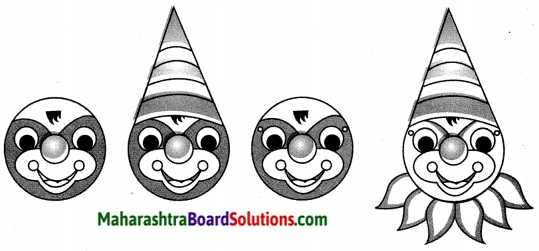
उत्तर:
साहित्य: मोठ्या आकाराची पेपर डिश, जाड सुई, जाड दोरा, काळे व लाल स्केचपेन कार्डपेपर इत्यादी.
कृची:
1. पांढऱ्या पेपरडिशच्या बाहेरच्या बाजूवर लाल व काळ्या स्केचपेनने विदूषकाचे नाक, डोळे, तोंड, कान रंगवावे.
2. विदूषकाच्या डोक्याच्या मापाची निमुळती उंच टोपी करून ती रंगवावी आणि विदूषकाच्या डोक्याला चिकटवावी.
3. पेपरडिशच्या दोन्ही बाजूंस छिद्रे पाडावीत. त्याला दोरा बांधावा. दोऱ्याची लांबी डोक्याला पुरेल व गाठ मारता येईल अशी असावी.
4. मुखवटा चेहऱ्यावर लावून डोक्याच्या मागे गाठ मारावी.
Marathi Sulabhbharati Class 5 Solutions Chapter 24 ऐका पहा करा Additional Important Questions and Answers
पुढील प्रश्नांची उत्तरे लिहा.
प्रश्न 1.
पाठात कोणाचा मुखवटा तयार केला आहे?
उत्तर:
पाठात हत्तीचा मुखवटा तयार केला आहे.
![]()
प्रश्न 2.
हत्तीचा मुखवटा कशाचा बनवायचा आहे?
उत्तर:
चेहऱ्याच्या आकाराच्या कागदाच्या साध्या बशीचा हत्तीचा मुखवटा बनवायचा आहे.
प्रश्न 3.
स्टेपलरच्या मदतीने किती कान मुखवट्याला जोडायचे आहेत?
उत्तर:
स्टेपलरच्या मदतीने दोन कान मुखवट्याला जोडायचे आहेत.
प्रश्न 4.
लांब त्रिकोणी आकारात कापलेला जाड कागद काय म्हणून वापरायचा आहे?
उत्तर:
लांब त्रिकोणी आकारात कापलेला जाड कागद सोंड म्हणून वापरायचा आहे.
रंगीत कागदाचा बिल्ला तयार करण्याची कृती त्याच्या आकृतीसह लिहा.
प्रश्न 1.
रंगीत कागदाचा बिल्ला तयार करण्याची कृती त्याच्या आकृतीसह लिहा.
शिक्षक: मुलांनो, आज आपण रंगीत कागदाचा बिल्ला कसा करायचा ते शिकणार आहोत. हे तयार करण्यासाठी पुढील साहित्य व साधने हवे.
साहित्य :रंगीत कागद, ड्रॉइंग पेपर, डिंक, कात्री. कृती:

उत्तर:
- 4 सें.मी. चे एक वर्तुळ ड्रॉइंगपेपर मधून कापून घ्यावे.
- आकृतीत दाखवल्याप्रमाणे कापलेल्या वर्तुळात 3,2,1 से.मी. ची तीन वर्तुळे काढावीत.
- 3 सें.मी. रूंदीच्या तीन वेगवेगळ्या रंगाच्या रंगीत कागदाच्या लांब पट्ट्या कापाव्यात.
- आकृतीत दाखवल्याप्रमाणे ‘अ’ भागाला डिंक लावा व त्यावर रंगीत कागदाच्या पट्ट्या दुमडत चिकटवत जा. अशा रीतीने पूर्ण गोलाकार चिकटवा. ‘ब’ ‘क’ वर्तुळावर रंगीत कागदाच्या पट्ट्या चिकटवा.
- मधोमध रंगीत कागदांचे लहान गोलाकार वर्तुळ चिकटवा.
- तयार झालेल्या कृतीच्या मागील बाजूस खालील भागावर 3 से.मी. रूंदीची एक पट्टी सारख्या आकारात दुमडून चिकटवा.
- अशा प्रकारे रंगीत कागदाचा बिल्ला तयार होईल.
![]()
प्रश्न 2.
रद्दीत जाणाऱ्या वर्तमान पत्राचा वापर करून दिलेले साहित्य व चित्रांच्या मदतीने कागदी पंखा तायर करण्याची कृती लिहा.
कागदी पंखा तयार करणे
साहित्य: वर्तमानपत्राचा कागद, आईस्क्रीमच्या काड्या किंवा बांबूच्या चपट्या काड्या, डिंक, हात पुसण्यासाठी कापड इत्यादी कृती:
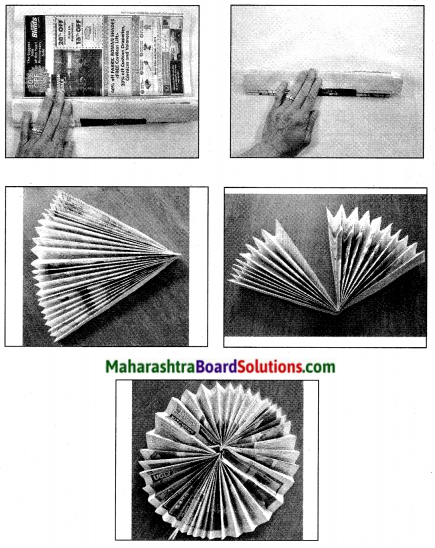
उत्तर:
- प्रथम आयताकृती कागद घेऊन त्याला सारख्या मापाच्या उलट-सुलट घड्या घालून घ्यावात. अशा प्रकारे त्याच मापाच्या आणखी एका कागदाला घड्या घालाव्यात.
- घड्या पूर्ण झाल्यावर त्याला मधोमध दुमडावे.
- आतील बाजूच्या पट्ट्यांवर खळ लावून ते एकमेकांना चिकटवावे. असे दोन्ही घडीचे कागद एकमेकांना चिकटवावेत.
- बाहेरच्या बाजूच्या पट्ट्यांना डिंकाच्या साहाय्याने आईस्क्रीमच्या किंवा बांबूच्या काड्या चिकटवाव्यात.
- पूर्ण वाळल्यानंतर काड्यांच्या सहाय्याने उघड-बंद करून पाहावे.
5th Standard Marathi Digest Pdf Download
- नदीचे गाणे Class 5 Marathi Question Answer
- मी नदी बोलते Class 5 Marathi Question Answer
- आमची सहल Class 5 Marathi Question Answer
- पैशांचे व्यवहार Class 5 Marathi Question Answer
- अनुभव-२ Class 5 Marathi Question Answer
- गमतीदार पत्र Class 5 Marathi Question Answer
- छोटेसे बहीणभाऊ Class 5 Marathi Question Answer
- वाचूया लिहूया Class 5 Marathi Question Answer
- प्रामाणिक इस्त्रीवाला Class 5 Marathi Question Answer
- ऐका पहा करा Class 5 Marathi Question Answer
- मालतीची चतुराई Class 5 Marathi Question Answer
- पतंग Class 5 Marathi Question Answer
- महर्षी विठ्ठल रामजी शिंदे Class 5 Marathi Question Answer
- फुलपाखरू आणि मधमाशी Class 5 Marathi Question Answer

